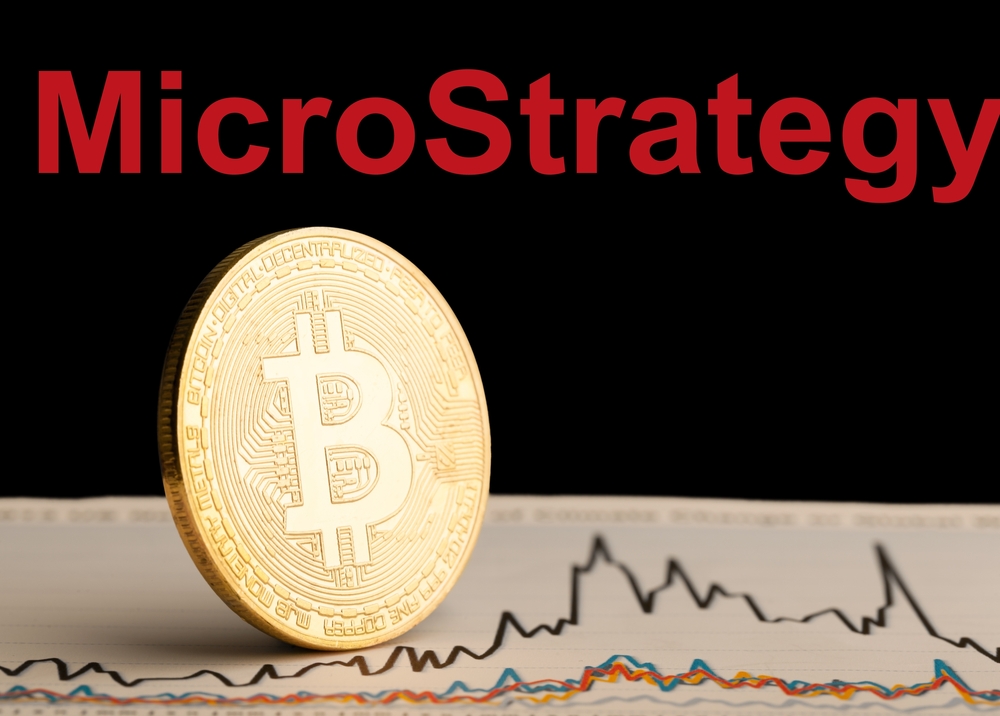Table of Contents
ToggleIntroduction
Crypto swapping is a way to trade one cryptocurrency for another without using traditional money. It’s like trading baseball cards, but with digital coins. You can swap Bitcoin for Ethereum, or any other pair of cryptocurrencies.
Swapping works by matching buy and sell orders on exchanges or through special swap protocols. These systems find the best prices and make sure both sides of the trade happen at the same time. This keeps things fair and safe for everyone involved.
Swaps can happen on big exchanges or smaller platforms. Some swaps use smart contracts, which are computer programs that run the trade automatically. This helps make swaps faster and cheaper than old-fashioned ways of trading money.
Key Takeaways
- Crypto swapping lets you trade one digital coin for another without using regular money
- Exchanges and swap protocols match trades to ensure fair prices for both parties
- Smart contracts can make swaps happen automatically, which saves time and money
Understanding Crypto Swapping
Crypto swapping lets users trade different cryptocurrencies directly. It’s a key part of decentralized finance that makes trading easier and faster.
Defining Swap in Cryptocurrency
A swap in cryptocurrency is when you trade one digital asset for another without using traditional exchanges. It’s a quick way to switch between different coins or tokens. Swaps happen on decentralized platforms called decentralized exchanges (DEXs).
These swaps use smart contracts. Smart contracts are computer programs that run automatically when certain conditions are met. They make sure both sides of the trade get what they agreed to.
Swaps can be done 24/7. Users don’t need to create accounts or go through lengthy verification processes. This makes crypto swapping popular for those who value privacy and speed.
Types of Swaps: Token Swap vs. Crypto Swap
There are two main types of swaps in the crypto world: token swaps and crypto swaps.
Token swaps involve trading tokens on the same blockchain. For example, swapping one Ethereum-based token for another. These are often faster and cheaper because they don’t need to bridge between different networks.
Crypto swaps, also called atomic swaps, happen between different blockchains. They let users trade Bitcoin for Ethereum, for instance. These are more complex and use special technology to ensure the trade is fair and secure.
Both types of swaps are important for a flexible crypto market. They give users more options and help connect different parts of the crypto ecosystem.
The Mechanism of Swapping
Crypto swapping involves complex processes that enable users to exchange different tokens directly. This mechanism relies on smart contracts and decentralized platforms to facilitate seamless transactions.
How Swaps Work on Decentralized Exchanges (DEXs)
Decentralized exchanges use automated market maker (AMM) protocols to enable token swaps. These protocols replace traditional order books with liquidity pools.
Users deposit tokens into these pools, creating trading pairs. When a swap is initiated, the smart contract calculates the exchange rate based on the ratio of tokens in the pool.
The AMM algorithm adjusts prices automatically as trades occur. This ensures liquidity and allows for instant trades without the need for matching buyers and sellers.
DEXs often face challenges during high network congestion, which can lead to slower transaction times and higher fees.
The Role of Smart Contracts in Swapping
Smart contracts are self-executing programs that automate the swapping process. They handle the entire transaction without intermediaries.
When a user initiates a swap, the smart contract:
- Verifies the user’s token balance
- Calculates the exchange rate
- Executes the trade
- Updates the liquidity pool
Ethereum’s blockchain is a popular platform for these contracts due to its robust programming capabilities.
Smart contracts ensure that trades are atomic, meaning they either complete fully or not at all. This protects users from partial executions or failed transactions.
Transaction Execution and Confirmation
When a user submits a swap request, it enters the blockchain’s transaction pool. Miners or validators then pick up the transaction for processing.
The steps in a swap execution include:
- Transaction broadcast
- Block inclusion
- Network confirmation
Confirmation times vary depending on network congestion and gas fees. Higher fees can prioritize transactions during busy periods.
Once confirmed, the smart contract updates token balances. The user receives their new tokens, and the transaction is permanently recorded on the blockchain.
Users can track their swap status through blockchain explorers or DEX interfaces. This transparency is a key feature of decentralized swapping mechanisms.
Types of Exchanges for Swapping
Crypto swapping happens on two main types of exchanges. Each offers different features and levels of control for users looking to trade digital assets.
Centralized Exchanges (CEX)
Centralized exchanges act as middlemen for crypto swaps. They hold user funds and match buy and sell orders. CEXs often have high liquidity and fast trade speeds.
Popular CEXs include:
- Binance
- Coinbase
- Kraken
CEXs require users to create accounts and verify their identity. They offer simple interfaces and customer support. This makes them user-friendly for beginners.
CEXs set their own fees and trading rules. They can freeze accounts or block trades. This gives them a lot of control over user funds and activities.
Decentralized Exchanges (DEX)
DEXs allow direct peer-to-peer trading without a middleman. They use smart contracts to enable atomic swaps between different cryptocurrencies.
Popular DEXs include:
- Uniswap
- SushiSwap
- PancakeSwap
DEXs don’t hold user funds. Traders keep control of their crypto in personal wallets. This reduces the risk of hacks or account freezes.
DEXs often have lower fees than CEXs. They also list a wider range of tokens. However, they can be harder to use and may have less liquidity for some trading pairs.
Trading Pairs and Liquidity
Trading pairs and liquidity are key concepts in cryptocurrency swapping. They determine which assets can be exchanged and how easily trades can be executed. Let’s explore how these elements work together in crypto markets.
How Trading Pairs Influence Swaps
Trading pairs are two cryptocurrencies that can be directly exchanged for each other. Common pairs include BTC/USD, ETH/BTC, and USDT/ETH. These pairings affect which tokens can be swapped and at what rates.
Some exchanges offer hundreds of trading pairs. This gives traders more options but can spread liquidity thin. Popular pairs tend to have better liquidity and tighter spreads.
Traders sometimes use multiple pairs to swap between assets. For example, to trade DOGE for ADA, they might first swap DOGE to USDT, then USDT to ADA.
Understanding Liquidity in Crypto Trading
Liquidity refers to how easily an asset can be bought or sold without affecting its price. High liquidity means trades can be executed quickly at stable prices.
Liquidity providers play a crucial role in crypto markets. They supply assets to trading pools, enabling smoother transactions for other users. In return, they earn fees from trades.
Low liquidity can lead to price slippage. This happens when large orders move the market price, resulting in less favorable rates for traders.
Decentralized exchanges use automated market makers to manage liquidity. These smart contracts automatically set prices based on the ratio of assets in a pool.
Crypto Exchange Platforms
Crypto exchange platforms play a key role in swapping digital assets. They offer different services, fee structures, and security measures. Users need to carefully assess these factors when choosing a platform.
Assessing Different Swap Services
Crypto exchanges provide various swap services. Some focus on simple trades between popular coins. Others offer more complex options like cross-chain swaps.
Centralized exchanges handle most trades. They match buyers and sellers automatically. These platforms are easy to use but require trusting a third party.
Decentralized exchanges run on smart contracts. They allow direct peer-to-peer swaps without middlemen. This can improve privacy and reduce fees.
Some platforms specialize in specific types of swaps. For example, atomic swaps enable trades across different blockchains without intermediaries.
Comparing Fees and Commissions
Exchange fees can greatly impact swap costs. Most platforms charge a percentage of each trade as a fee.
Maker-taker fee models are common. Makers who add liquidity pay lower fees. Takers who remove liquidity pay higher fees.
Some exchanges use tiered fee structures. Higher trading volumes lead to lower fees.
Gas fees for blockchain transactions add to the total cost. These vary by network and can be high during busy times.
Hidden fees like deposit or withdrawal charges may apply. It’s important to check the full fee schedule.
Evaluating Exchange Reliability and Security
Security is crucial when choosing a crypto exchange. Hacks and scams have led to major losses in the past.
Reputable exchanges use cold storage for most funds. This keeps assets offline and safe from hackers.
Two-factor authentication adds an extra layer of account security. It’s a must-have feature for any platform.
Insurance policies can protect user funds. Some exchanges offer coverage against theft or loss.
Regulatory compliance is another key factor. Platforms following local laws are often more trustworthy.
Liquidity affects trade execution and price stability. Bigger exchanges usually offer better liquidity.
Financial Implications of Swapping
Swapping in crypto comes with important financial considerations. These include the costs involved in transactions and the impact of price changes on swap outcomes.
Understanding Transaction Fees
Crypto swaps involve transaction fees that can affect the overall value of the exchange. These fees vary based on the blockchain and swap platform used.
Gas fees on networks like Ethereum can be high during busy times. This makes small swaps less cost-effective. Some platforms charge additional fees on top of network costs.
Decentralized exchanges often have lower fees than centralized ones. But they may have higher minimum swap amounts. It’s key to compare fee structures across different services.
Some swaps use multiple transactions, increasing total fees. Advanced users can sometimes adjust settings to lower costs, but this requires careful consideration of trade-offs.
Price Volatility and Swap Timing
Crypto prices can change rapidly, impacting swap rates. This price volatility creates both risks and opportunities for traders.
Swaps execute at current market prices. A delay between initiating and completing a swap can lead to slippage. This means getting less of the target crypto than expected.
Some platforms offer slippage protection. This sets a maximum acceptable price change. If exceeded, the swap cancels automatically.
Timing swaps during periods of low volatility can improve outcomes. But predicting these periods is challenging. Using limit orders allows users to set desired exchange rates.
Market trends can significantly impact swap value. Bull markets may favor holding, while bear markets could make swapping to stablecoins appealing.
Decentralized Finance (DeFi) and Swaps
Decentralized Finance (DeFi) has changed how crypto swaps work. It brings new ways to trade and get better deals. DeFi uses smart contracts to make swaps faster and cheaper.
The Integration of DeFi in Crypto Swapping
DeFi has made big changes to crypto swapping. It lets people trade without middlemen. Atomic swaps are now possible on the blockchain. This means trades happen all at once, making them safer.
Smart contracts run these swaps. They make sure both sides of a trade get what they agreed to. No one can cheat. This builds trust in the system.
DeFi also brings in liquidity pools. These are big pots of crypto that anyone can use to trade. They make it easy to swap even rare tokens. Users don’t have to wait for a buyer or seller.
Impact of DeFi on Liquidity and Swapping Models
DeFi has made getting liquidity much easier. In the past, only big players could offer lots of liquidity. Now, anyone can add to a liquidity pool and earn fees.
This change means there’s often more liquidity for swaps. More liquidity usually means better prices. It’s easier to trade large amounts without moving the market price too much.
Peer-to-peer (P2P) trading has also grown thanks to DeFi. People can trade directly with each other. The smart contract acts as a trustworthy middleman.
New swap models have come up too. Flash swaps let traders borrow and trade in one quick move. This opens up new ways to make profits or fix prices across different platforms.
Wallets and Storage Solutions
Crypto wallets are essential for swapping and storing digital assets. They come in different types, each with its own security features and ease of use.
Choosing a Wallet for Swapping and Trade
Hot wallets connect to the internet, making them convenient for frequent trades. These include mobile and desktop apps, as well as browser extensions. Cold wallets, like hardware devices, stay offline for better security.
For active swapping, a hot wallet is often the best choice. It allows quick access to funds and easy interaction with decentralized exchanges. Many hot wallets now support multiple cryptocurrencies and NFTs.
Some popular hot wallets include MetaMask, Trust Wallet, and Coinbase Wallet. These offer user-friendly interfaces and built-in swap features.
Security Measures for Your Digital Assets
Protecting your digital assets is crucial. Use strong, unique passwords for all your wallets. Enable two-factor authentication when available.
For large holdings, consider a hardware wallet like Ledger or Trezor. These devices store private keys offline, reducing hacking risks.
Back up your wallet’s recovery phrase. Write it down on paper and store it in a safe place. Never share this phrase with anyone.
Be cautious of phishing attempts. Always double-check website URLs and app sources. Use official app stores and verified links.
Regularly update your wallet software to get the latest security patches. This helps protect against newly discovered vulnerabilities.
Legal and Regulatory Considerations
Crypto swaps face complex legal and regulatory challenges worldwide. Different countries have varying approaches to overseeing these transactions.
Compliance with Global Cryptocurrency Regulations
Crypto swaps must follow rules in many jurisdictions. The U.S. treats most cryptocurrencies as commodities or securities, impacting how swaps are regulated.
In Europe, crypto assets may fall under existing financial laws. Germany, for example, classifies some crypto activities under banking regulations.
Swaps involving fiat currency often face stricter oversight. Exchanges must follow anti-money laundering (AML) and know-your-customer (KYC) rules.
Regulatory clarity varies globally. Some nations ban crypto transactions entirely. Others are creating new frameworks for digital assets.
Companies offering swap services need to stay up-to-date on changing laws. This may involve:
- Getting proper licenses
- Keeping detailed transaction records
- Reporting suspicious activity
- Verifying user identities
Non-compliance can lead to fines or legal action.
Evolving Trends in Crypto Swapping
Crypto swapping is changing fast. New platforms and protocols are making trades easier and safer. The future of swapping looks bright, with more options coming soon.
Innovations in Swapping Protocols and Platforms
Atomic swaps are a big step forward in crypto trading. They let users swap coins directly, without middlemen. This makes trades faster and cheaper.
New platforms are popping up all the time. They offer better rates and more coin choices. Some even work across different blockchains.
Security is getting better too. Smart contracts now protect users from scams and hacks. This makes people feel safer when trading.
User-friendly interfaces are another trend. Even beginners can now swap crypto easily. Mobile apps let users trade on the go.
The Future of Crypto Swapping
Cross-chain swaps are the next big thing. They’ll let users trade between any two cryptocurrencies. This will make the crypto world more connected.
Artificial intelligence might soon help with swapping. It could find the best trades and warn about risks.
Decentralized exchanges are likely to grow. They give users more control over their funds.
Regulation will play a big role. Clear rules could make swapping safer and more widely accepted.
As crypto grows, swapping will become faster and cheaper. This could bring in more users and boost the whole crypto market.
Frequently Asked Questions
Crypto swapping involves exchanging one cryptocurrency for another. Let’s explore some common questions about this process.
What are the advantages of swapping cryptocurrency?
Swapping gives users more options. It lets people trade coins easily without using regular money. Swaps can be fast and cheap. They also give access to a wider range of crypto assets.
How do you execute a swap between different cryptocurrencies?
First, pick a swap platform. Connect your wallet to the platform. Choose the coins you want to trade. Enter the amount you want to swap. Review the exchange rate and fees. If you agree, confirm the swap. The new coins will show up in your wallet soon.
What fees are typically involved in cryptocurrency swapping?
Swap fees can vary. Most platforms charge a small percentage of the trade. This is often around 0.1% to 1%. Some charge a flat fee instead. Network fees may apply too. These cover the cost of processing the swap on the blockchain.
Which platforms are considered the most reliable for crypto-to-crypto exchanges?
Some well-known swap platforms are Uniswap, PancakeSwap, and 1inch. Larger exchanges like Binance and Coinbase also offer swaps. It’s smart to research platforms before using them. Look for good security, low fees, and positive user reviews.
What are the potential risks associated with swapping cryptocurrencies?
Price changes can happen fast in crypto. The value of your coins might drop during a swap. Some platforms might not be secure. There’s a risk of losing funds to hacks or scams. Make sure to use trusted platforms and double-check all details before swapping.
How does cryptocurrency swapping impact your tax obligations?
Swaps are often taxable events. In many countries, you may owe taxes on any gains. It’s important to keep good records of all swaps. This includes the date, coins traded, and their values. Talk to a tax expert to understand your specific obligations.




















